James (Jim) Lutz is an Associate Professor of Forestry at Utah State University. He is also the Lead-PI of ForestGEO’s Yosemite plot (with Co-PI Andrew Larson) and the sole PI of ForestGEO’s Wind River and Utah plots. In this latest installment of our Spotlight Series, we hear from Jim about his non-linear path to forest ecology, the different types of forests within western North America, and his off-hours interest in flying.
When did you realize you wanted to be a scientist/work in forest ecology? How did you decide to go down this career path?
I was introduced to ecology at Friends School of Baltimore by a truly excellent educator, George Wright. I put ecology aside for twenty years to pursue engineering, and then finance, eventually finding myself as a Managing Director of HSBC Investment Banking in London. In 2003, I quit that job and returned to university to earn my MS and PhD in ecology. It’s been Big Trees ever since.
What led you down the path to your current job? What has been your biggest challenge in getting to this point in your career?
I would say a lot of my career just proceeded by accident, taking advantage of opportunities that seemed interesting, rather than identifying any specific plan. Once I decided to go back to school, I did make an “academic plan” and have generally followed it to the permanent position in academia that I now hold (just one more step to “full” professor!). I wouldn’t necessarily recommend going back to graduate school as an older student, but it can work.
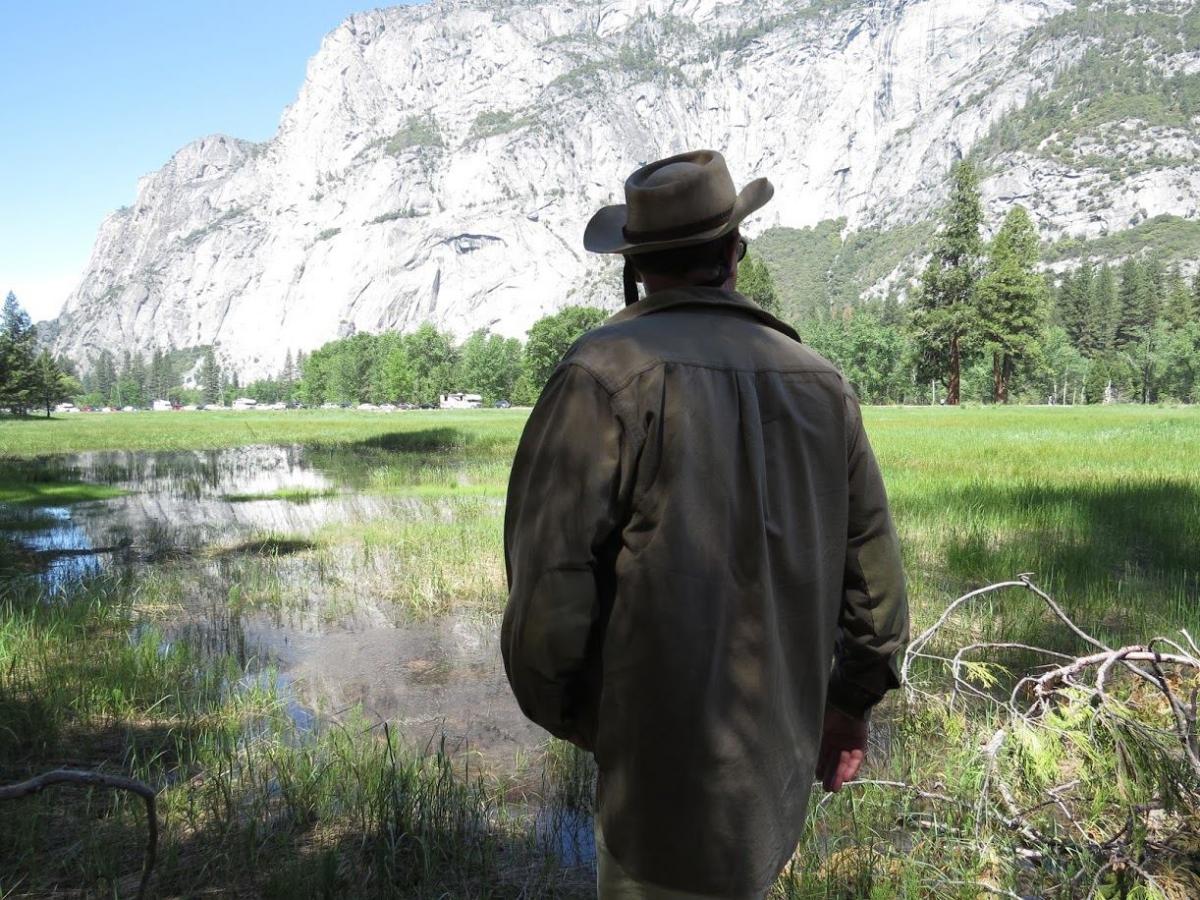
When did you first get involved in the ForestGEO network?
My first experience with the ForestGEO network happened during my PhD program when Stuart Davies contacted my PhD adviser, Jerry Franklin, about expanding ForestGEO to the temperate zone. After hearing about ForestGEO and having had some experience with smaller permanent plots in the Pacific Northwest, I decided to establish my first plot in Yosemite National Park. Why Yosemite? Well, I had spent a lot of time in the Sierra Nevada in the 1980s and 90s – climbing, hiking, and telemark skiing there for a decade. In fact, after I graduated from college, I moved to Yosemite Valley to climb. I wanted a good reason to really get to know the forests of the Sierra Nevada. I began planning and permitting before I had received my PhD and established the plot with my colleagues, Andrew Larson, Mark Swanson, and James Freund, in the subsequent two years (2009-2010).
What is the most interesting or unique aspect of your site?
I have three sites, and they were all chosen to represent model ecological forest communities for western North America. My first site, in Yosemite National Park, is a ‘frequent fire’ site, with fire in the pre-Euro-American era occurring every 29.5 years, on average. This site features tall (>60 m) trees, mostly from the Pinaceae family.
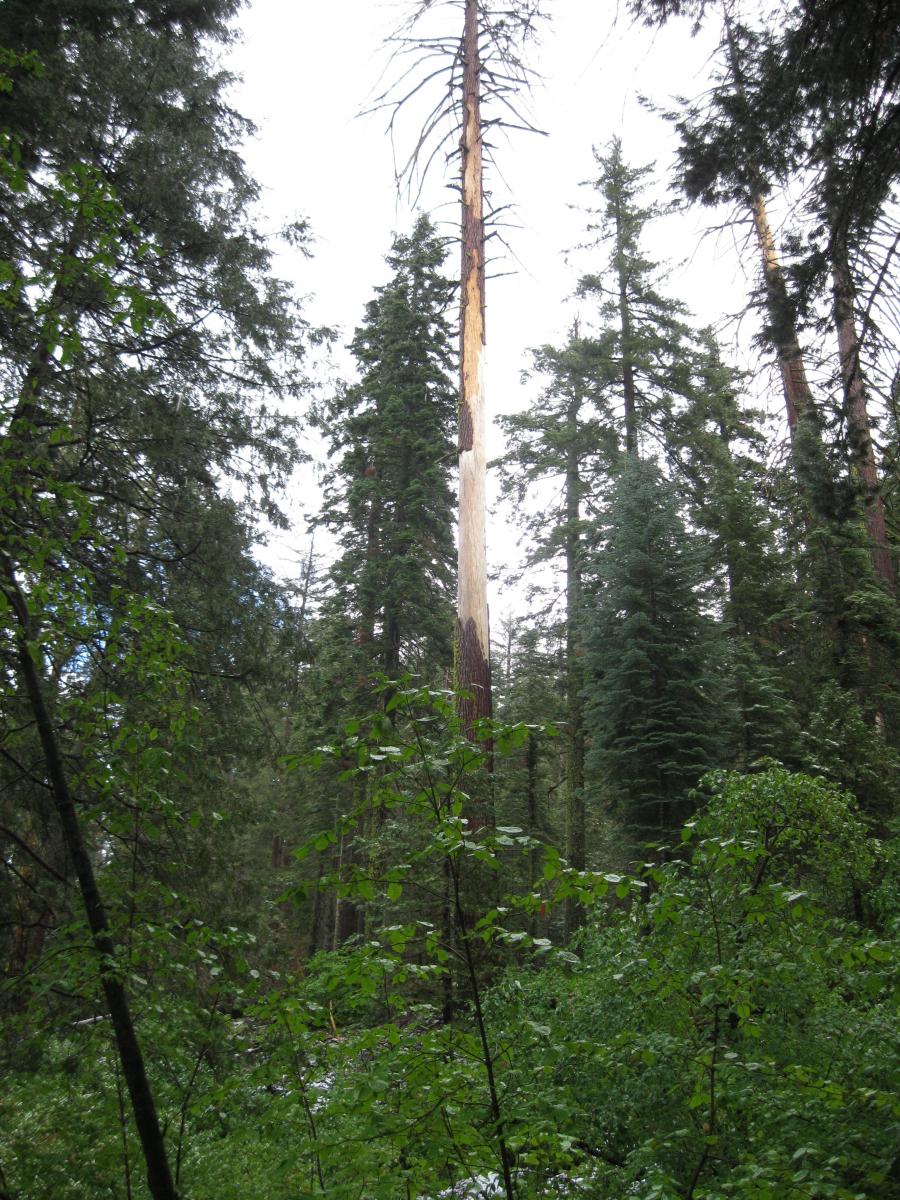
My second site, Wind River in Washington, has not experienced major disturbance since a stand-replacing fire 525 years ago. It also features tall (>60 m) trees, high biomass (532 Mg/ha), and is unique in that the deadwood component on the ground is very large. In low-elevation Pacific Northwest forests, down wood is almost always saturated; therefore, too wet for much decomposition. The deadwood component of western North American forests is an immediately visible difference when compared to tropical forests. The Wind River site is co-located with the flux tower for NEON Domain 16.
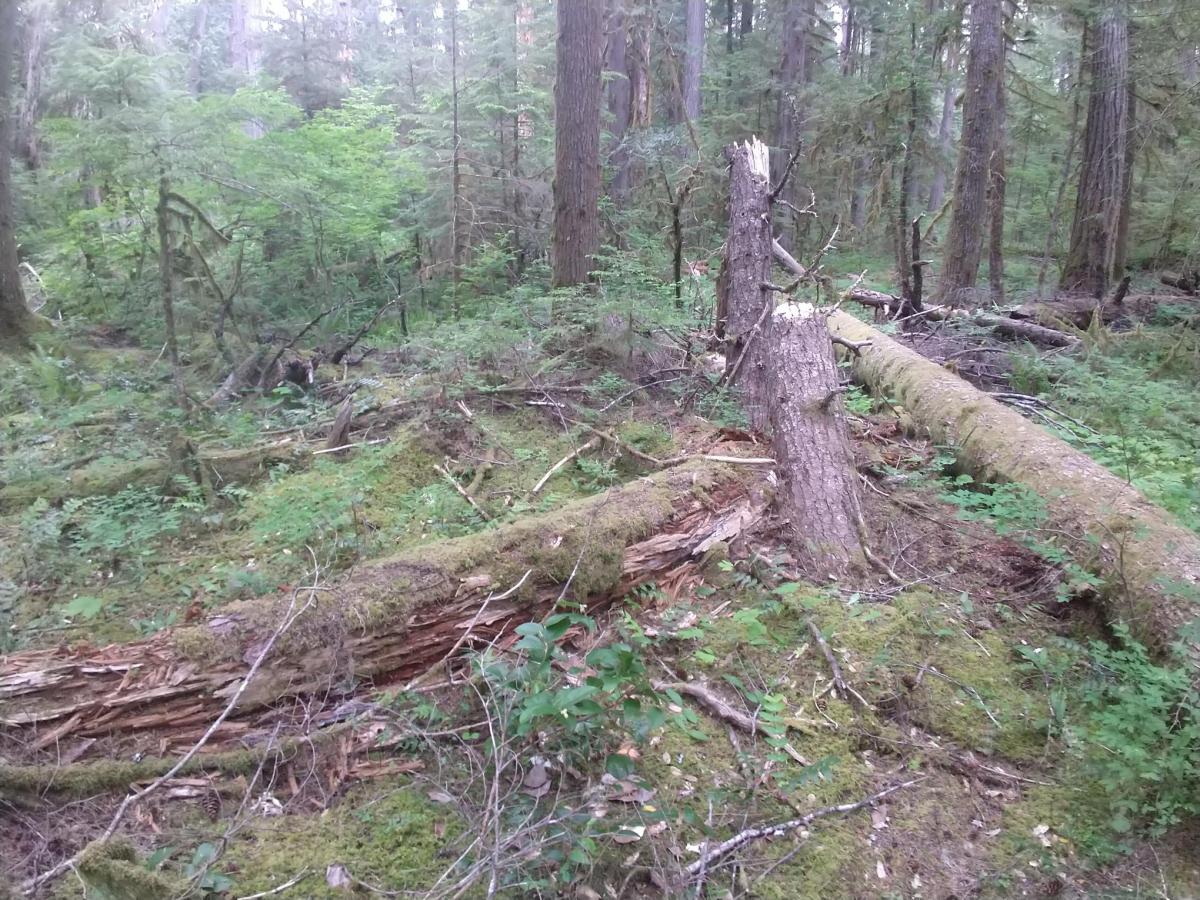
The third site (Utah), at Cedar Breaks National Monument, is at the elevational limits of closed-canopy forests (3,000 m). It features bristlecone pine (Pinus longaeva), and some of the trees in the plot are over 1,400 years old.
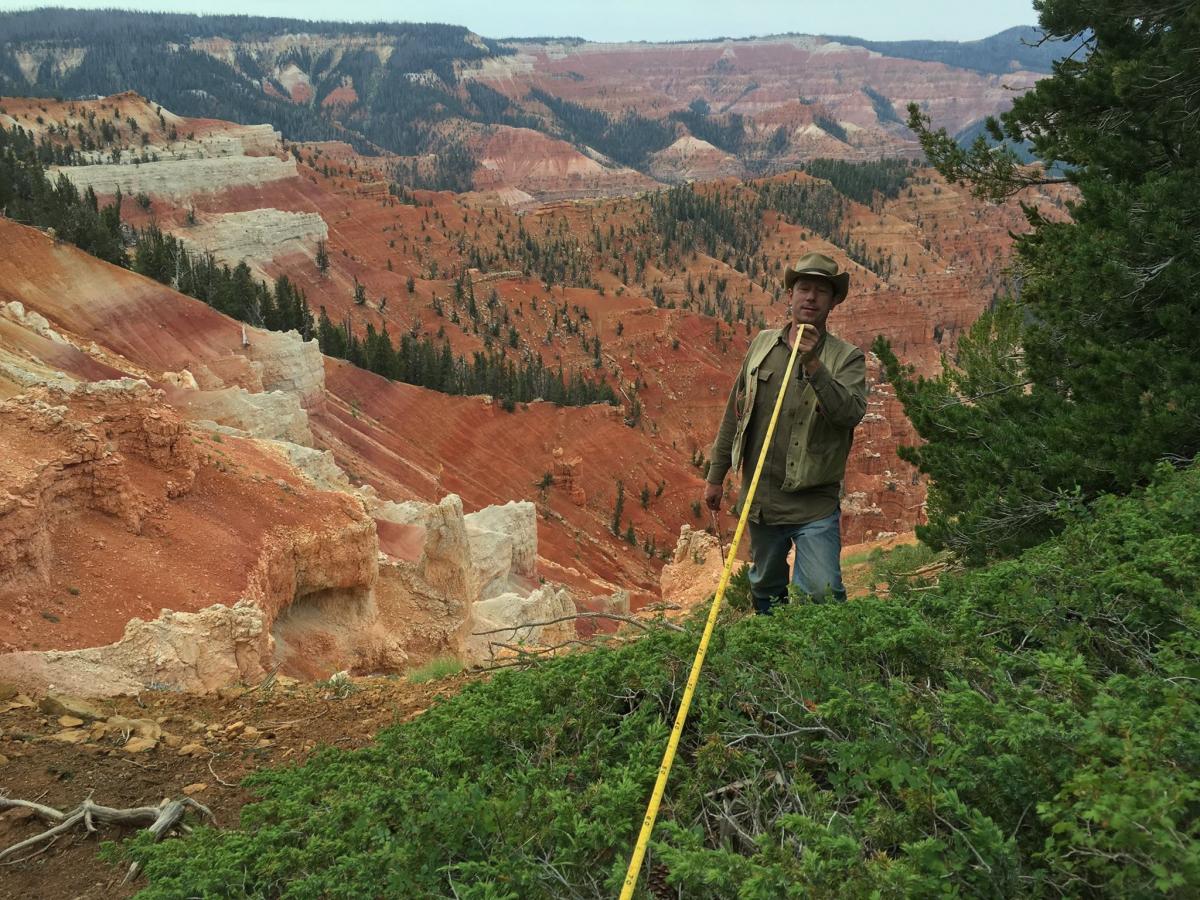
All three sites have very low species diversity. Two have very high biomass, and one has 100% of common species demonstrating niche preferences.
What questions are you currently addressing in your research/site?
My graduate students and I survey the entirety of each site annually for mortality, recruitment, and snagfall. We are working on examining the relationships among tree mortality, annual climate variability, and tree local neighborhoods (the combination of species and tree sizes around each individual). We are also looking at spatial patterns of mortality, ectomycorrhizal associations, and spatially explicit fire-related demography. We are very active participants in ForestGEO cross-plot analyses, with one example being our 2018 manuscript examining large-diameter trees in 48 ForestGEO plots. Good collaborations are all about the people – so the longevity of ForestGEO and the continuity that the workshops bring really help advance the science.
What kind of capacity building opportunities does your site provide for students, early-career researchers, and the local community?
Almost all the work in the Big Plots is done by graduate students (some might say, all the work) and the summer crews that I hire. Summer crews are generally 3rd year university students or students who have just graduated. We train our field crews not only in the ForestGEO protocols, but also our other protocols for pathology and survey of shorter plants. We have always relied on considerable volunteer labor, and many of our students return in subsequent years to help.
What do you like to do when you’re not studying forest dynamics?
I like to enjoy myself in the outdoors – either the American West or in the very distinct forest plots throughout the ForestGEO network (and many thanks to all the PIs who hosted me on my sabbatical journey to the plots). I also like to fly – I’m licensed for planes and helicopters.
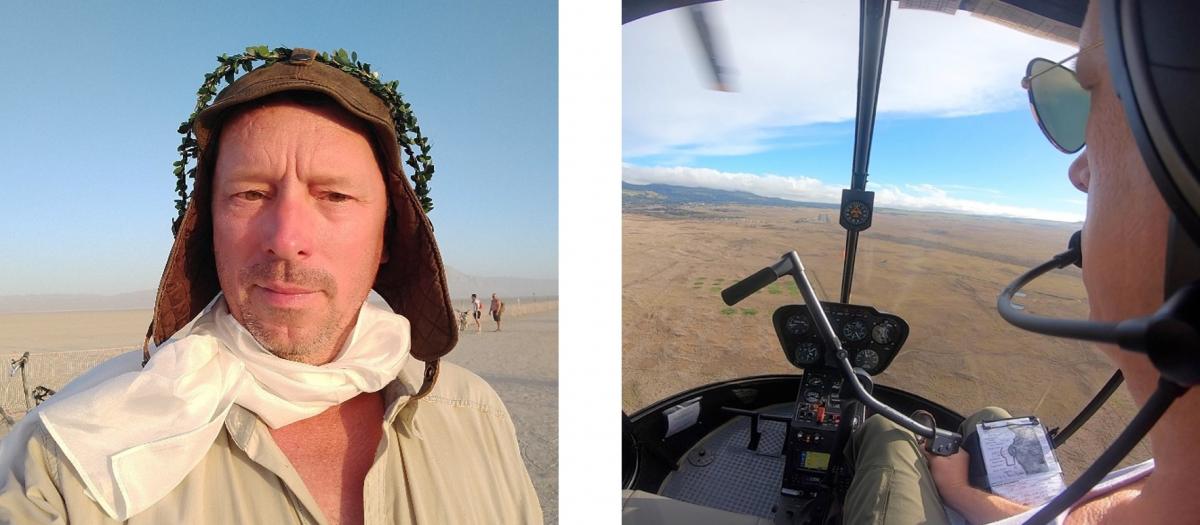
Web Presence
jamesalutz.com | Western Forest Initiative | Yosemite Forest Dynamics Plot | Wind River Forest Dynamics Plot | Utah Forest Dynamics Plot
BBC Feature
This BBC video profiles the work of Jim and his team at Yosemite.
Publication of Note
Lutz, J. A., T. J. Furniss, D. J. Johnson, S. J. Davies, D. Allen, A. Alonso, K. Anderson-Teixeira, A. Andrade, J. Baltzer, K. M. L. Becker, E. M. Blomdahl, N. A. Bourg, S. Bunyavejchewin, D. F. R. P. Burslem, C. A. Cansler, K. Cao, M. Cao, D. Cárdenas, L-W. Chang, K-J Chao, W-C. Chao, J-M. Chiang, C. Chu, G. B. Chuyong, K. Clay, R. Condit, S. Cordell, H. S. Dattaraja, A. Duque, C. E. N. Ewango, G. A. Fisher, C. Fletcher, J. A. Freund, C. Giardina, S. J. Germain, G. S. Gilbert, Z. Hao, T. Hart, B. C. H. Hau, F. He, A. Hector, R. W. Howe, C-F. Hsieh, Y-H. Hu, S. P. Hubbell, F. M. Inman-Narahari, A. Itoh, D. Janík, A. R. Kassim, D. Kenfack, L. Korte, K. Král, A. J. Larson, Y-D. Li, Y. Lin, S. Liu, S. Lum, K. Ma, J-R. Makana, Y. Malhi, S. M. McMahon, W. J. McShea, H. R. Memiaghe, X. Mi, M. Morecroft, P. M. Musili, J. A. Myers, V. Novotny, A. de Oliveira, P. Ong, D. A. Orwig, R. Osterag, G. G. Parker, R. Patankar, R. P. Phillips, G. Reynolds, L. Sack, G-Z. M. Song, S-H. Su, R. Sukumar, I-F. Sun, H. S. Suresh, M. E. Swanson, S. Tan, D. W. Thomas, J. Thompson, M. Uriarte, R. Valencia, A. Vicentini, T. Vrška, X. Wang, G. D. Weiblen, A. Wolf, S-H. Wu, H. Xu, T. Yamakura, S. Yap, and J. K. Zimmerman. 2018. Global importance of large-diameter trees. Global Ecology and Biogeography 27(7): 849-864. http://dx.doi.org/10.1111/geb.12747
